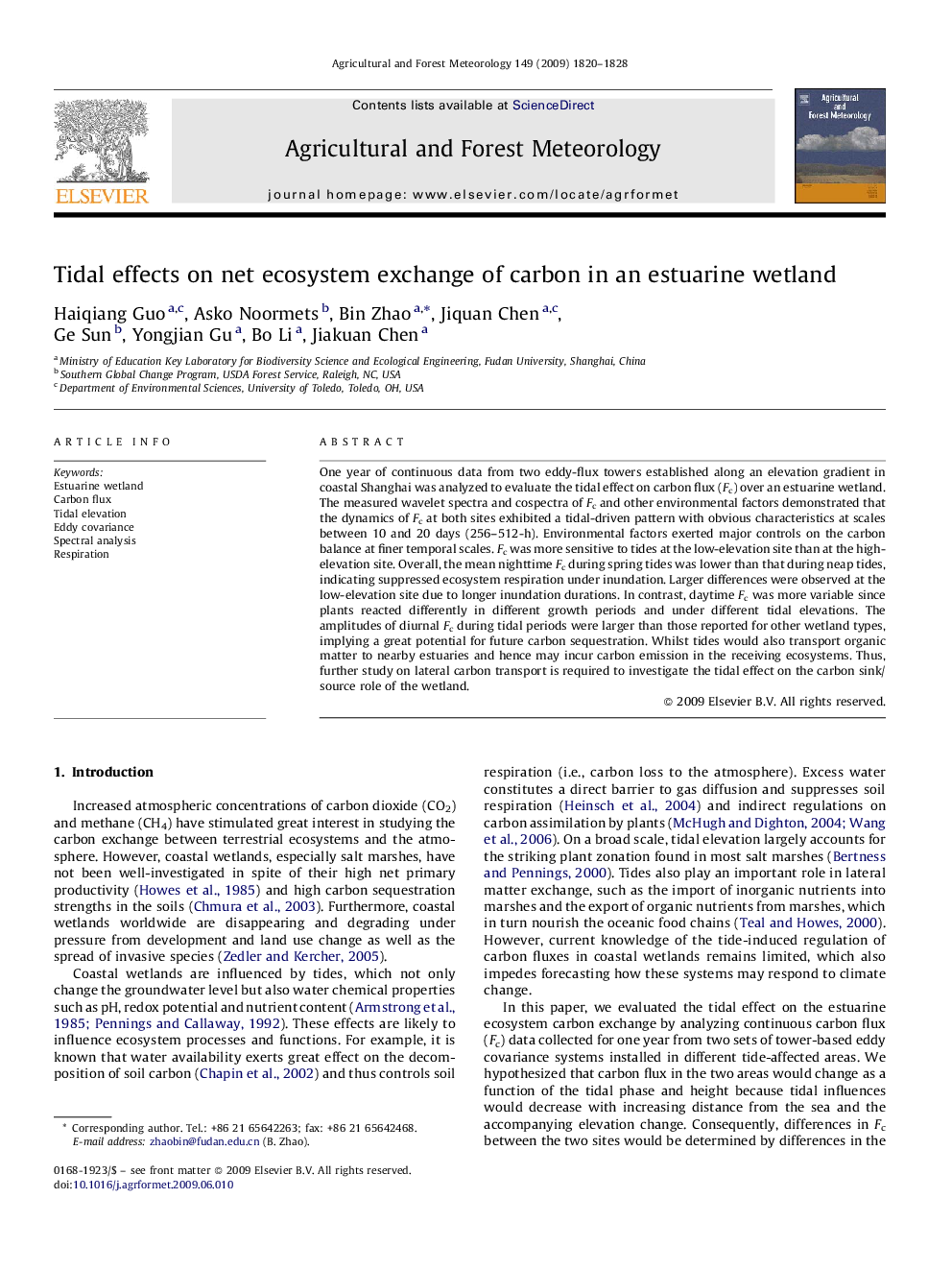| Article ID | Journal | Published Year | Pages | File Type |
|---|---|---|---|---|
| 82523 | Agricultural and Forest Meteorology | 2009 | 9 Pages |
One year of continuous data from two eddy-flux towers established along an elevation gradient in coastal Shanghai was analyzed to evaluate the tidal effect on carbon flux (Fc) over an estuarine wetland. The measured wavelet spectra and cospectra of Fc and other environmental factors demonstrated that the dynamics of Fc at both sites exhibited a tidal-driven pattern with obvious characteristics at scales between 10 and 20 days (256–512-h). Environmental factors exerted major controls on the carbon balance at finer temporal scales. Fc was more sensitive to tides at the low-elevation site than at the high-elevation site. Overall, the mean nighttime Fc during spring tides was lower than that during neap tides, indicating suppressed ecosystem respiration under inundation. Larger differences were observed at the low-elevation site due to longer inundation durations. In contrast, daytime Fc was more variable since plants reacted differently in different growth periods and under different tidal elevations. The amplitudes of diurnal Fc during tidal periods were larger than those reported for other wetland types, implying a great potential for future carbon sequestration. Whilst tides would also transport organic matter to nearby estuaries and hence may incur carbon emission in the receiving ecosystems. Thus, further study on lateral carbon transport is required to investigate the tidal effect on the carbon sink/source role of the wetland.
